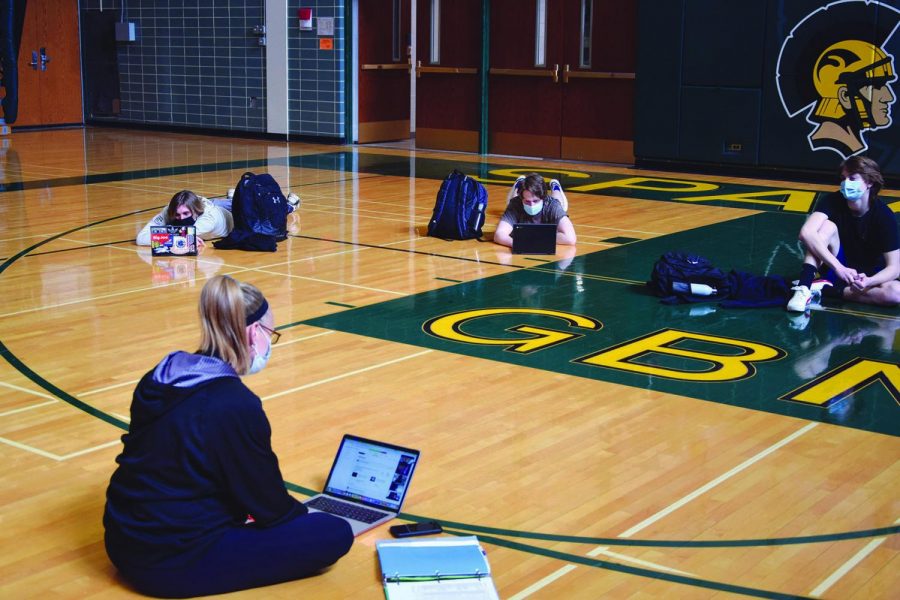SEL: what students need
During SEL instruction in P.E. teacher Jennifer Schultz’s Sports and Fitness class, students watch a video emphasizing resilience and courage. SEL should remain in P.E. curriculums and include extended instruction on mental health, discussion in small groups and opportunities to listen to others’ experiences. Photo by Natalie Sandlow
Social Emotional Learning, also known as SEL, was implemented within P.E. classes this school year to help students become better equipped to cope with emotions in high school and into adulthood. The Editorial Board commends Glenbrook North for implementing SEL, for listening to its students and for taking steps to support the mental health and well-being of its students in difficult times.
SEL has the potential to support student mental health throughout the rest of this semester and for years to come, and student feedback can strengthen the program even more. Below, the Editorial Board has provided three suggestions for the SEL curriculum, changes we feel would improve the support the SEL curriculum already provides. Emma Soneson, Ph.D. student and Gates Scholar, was consulted when considering the following suggestions.
Implement mental health literacy
Mental health instruction should be reinforced throughout all grade levels in order for students to develop their knowledge of mental health. Though mental health literacy is introduced to students in Health Education, the SEL curriculum should continue to teach concrete ways to identify whether a peer may be struggling, how to support peers and how to seek support for others.
Part of mental health literacy is also monitoring one’s own mental health. Learning to identify any changes in one’s mental well-being is a vital skill that should be emphasized in the SEL curriculum. If the mental health instruction from Health Education is repeated and built on, students will have an even stronger grasp on how to support themselves and others.
Build trust in small groups
Instead of having full-class discussions, P.E. classes should be broken up into smaller groups of five or six students that last throughout the semester. It is often easier to share personal experiences and thoughts with a smaller group of people, especially if students are given adequate time to get to know each other. The curriculum should include efforts to establish an atmosphere of trust within these groups where students can feel comfortable talking about sensitive topics with each other.
Confront the stigma
For some, mental health remains a taboo topic. To break down the stigma, speakers should be invited to share their personal stories about mental illness, similar to Health Education, which hosts a speaker from Elyssa’s Mission for the Signs of Suicide program. Each person’s experience with mental illness is unique — by being exposed to the stories of others, students can come to recognize that mental illness does not need to look a certain way to warrant help. The curriculum can also include different means of exposure to others’ stories, such as short documentaries, podcasts, articles and essays.
SEL is an effective program, and it can be made even stronger if the school keeps considering student perspectives on what keeps us engaged and what we need for our mental well-being. The conversation about how to best support the mental health of students and GBN community members must continue.








